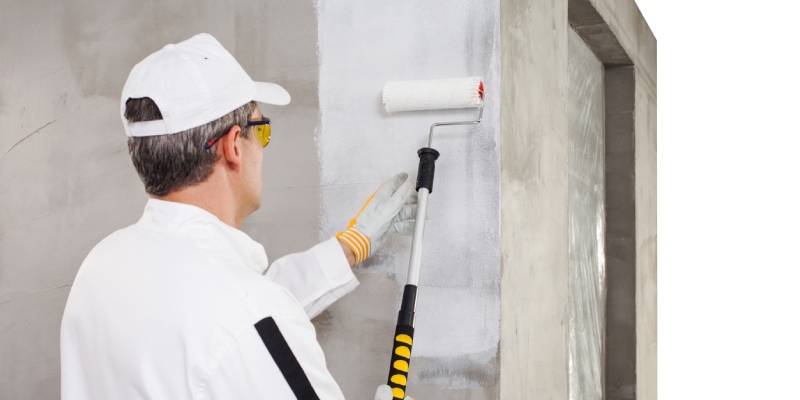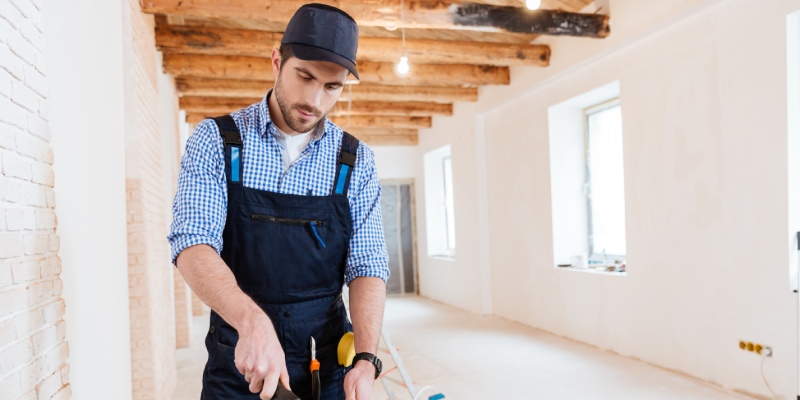When starting a new paint project, selecting the right color is an important step in making your vision, reality. However, there is one other key step that you’ll want to include before applying any paint. While priming can sometimes seem like an unnecessary extra step, a quality primer can do wonders for your painting project.
A primer will help to prepare and seal the surface you’re painting. If you’re working with something that’s already been painted (such as a wall or a piece of furniture), or you’re starting with bare wood, a coat of primer will also help to cover any blemishes such as knots or unevenness. Because primer seals the surface of your project, the paint will adhere better, helping you to achieve lasting results. Using a primer can also help you save money. When primer isn’t used, paint typically just soaks into the surface, resulting in having to apply more and more coats of paint, costing you both your time and money.
Prime Before You Paint

KEEP READING...
A TEST TO TELL IF THE EXISTING PAINT WILL HOLD THE NEW PAINT OR PRIMER
If the surface you want to paint is already painted, the question arises: Is this a good surface on which to apply more paint? Here’s how to tell: Take a piece of tape and rub the sticky side onto the surface. Then, yank it off. Really yank it. If some of the paint flakes off with the tape, you’ll need to sand down the old paint to remove anything the least bit loose. If a powdery substance comes off, you’ll need to wash the surface thoroughly before applying the new paint. And if the old paint was applied prior to the 1970s, it likely contains lead and the dust from lead paint can be dangerous to human health, so take all necessary precautions. In most cases, however, it’s a good idea to begin with a primer before you paint.
PRIME THIS
Paint has three main ingredients: pigments to add color, binders to hold it together when dry, and liquid solvents or “carriers” (such as water or oil) to make the whole thing fluid enough to spread around or shoot through a nozzle. As the solvents evaporate, the binders, pigments and additives such as thickeners and fungicides remain.
In the past, paint with an oil-based solvent was considered the superior, most long-lasting product. But environmental concerns have put it in lesser favor at the same time science has made advances in latex paint technology. Water-based paint emits fewer toxic fumes, dries quickly, is flexible (less cracking) and, importantly, cleans up with water.
Professional house painters and artists may still favor oil-based paints and primers. Dan Gallagher, a decorative painter in Los Angeles, said “I would not use water-based primers over raw wood unless I had to. Manufacturers have reformulated water-based primers over in the past five years and although they claim these primers will block stains and wood knot bleeding, I have yet to really see it work.”
According to Gallagher, oil-based primer is better for areas that get a lot of touching and use, such as doors, windows and cabinets. However, water-based primers are fine for areas that get less use or contact, such as crown moldings. And, he said, a water-based paint can generally be used over an oil-based primer, but following manufacturer directions is the best course. In other words, read the can.
Here’s another way primer is like underwear: there are times when it’s optional. For instance, when you cover a sturdy layer of existing paint with the same type of new paint, the primer is not so critical.
TYPES OF PRIMERS
When purchasing a primer, look for one that is specific to the type of project you’re completing.
Oil-based primers are widely used and work well with most types of paint. They are used to prepare a variety of different projects: walls, metals, and any surface that has previously been painted will work well with an oil-based primer.
Latex primers are water based and are most often used for prepping drywall for paint or on soft woods such as pine. Latex primer covers well and also helps to conceal any cracks or scuffs in the surface.
Shellac primers are ideal to seal wood or to do an interior paint job where the walls might be smoke-stained or dingy. Shellac-based primers are great for stain-blocking. Whether rust, water damage, or smoke damage is the issue, a shellac primer can cover it! Keep in mind that there is more work involved when using a shellac primer, because it has to be thinned with denatured alcohol.
Paint and Primer in one is also another choice. However, the results with a paint and primer in one are not predictable. If there are any stains, the color is more than a few shades lighter than what is already on the surface, or if you’re working with new wood, selecting a specific primer is best.








Leave a Reply